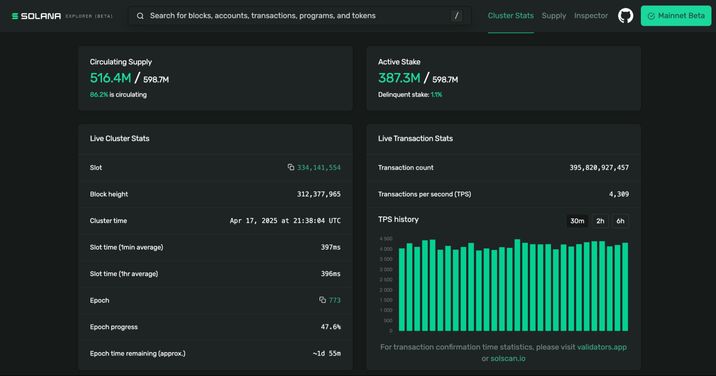Solana Transaction ID Example

Solana (SOL) is a high-performance blockchain designed to support scalable decentralized applications (dApps) and cryptocurrency projects. Its main goal is to provide fast, low-cost performance on the blockchain while maintaining security and decentralization. However, SOL’s key feature is its use of the Proof of History (PoH) algorithm. This means that verifying a transaction requires understanding how PoH works. In this article, we’ll explain how it works.
How does the Proof of History (PoH) algorithm work?
Order is fundamental to trust in crypto. In most blockchains (e.g., Bitcoin or Ethereum), it is difficult to determine exactly in what order events occur. Nodes have to coordinate timing—this takes time and resources.
Proof of History (PoH) is a mechanism that allows one to prove that a transaction (or any event) happened at a specific time and in the correct sequence — without needing to coordinate with all network participants in real time.
Here is how this is accomplished:
- A sequence of hashes is generated using a cryptographic function (such as SHA-256), where each successive hash depends on the previous one.
- These hashes effectively create a “timestamp”—they can't be spoofed or generated faster.
- Any transaction is inserted into this chain at a certain point—and is permanently fixed in the historical sequence.
The point is that PoH works with Proof of Stake (PoS), improving performance and synchronization.
Therefore, each such event is inserted into a hash chain that already “flows” with time. Thanks to this, it is possible to prove that transaction A occurred before B without involving the clock or common time.
What is the difference between Solana and Bitcoin?
SOL is different from other platforms because it uses a unique consensus mechanism — Proof of History. Let's look at the advantages it offers compared to, for example, Bitcoin.

However, not only are Solana’s working methods different, but so is the way transaction IDs function.
How to find a Solana transaction ID?
A transaction ID (a transaction hash or a signature) is a unique identifier for any transaction in the Solana network. It consists of 88 alphanumeric characters (in base58 format).
Here are examples of Solana transaction IDs:
- 3eURcjxxJMXx5oV5c6SUMozk9atnU2vJ1CrVtSaBs82f96eXUidEENyQs2fpCeKAeJcu2L2x95zQ1FRLupgMSpvf
- 4kWt5HeUZmYihQHszoAjW23P6ApoLdc9hACc7F8SQ2VeFj42u4VS1myQoz3a7RWUhGgiCADnYTCHPhg86KvhJgFP
To find your transaction ID, you can use the Solana blockchain explorer or tools like SolScan and supported wallets.


How to find a Solana transaction ID in Coin Wallet?
Use your unique passphrase to log in to Coin Wallet, select Solana from the coin list, and view transaction details in the “History” section.
